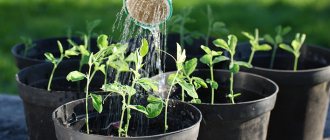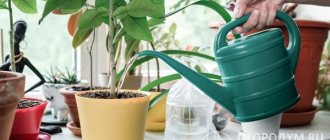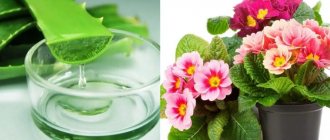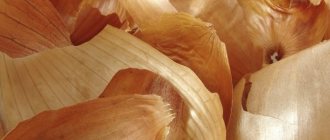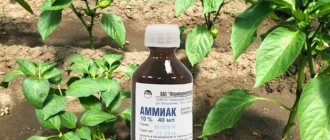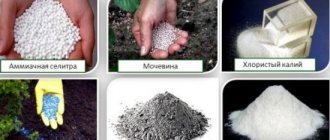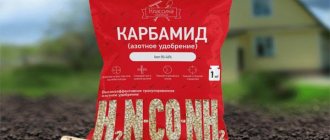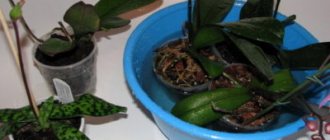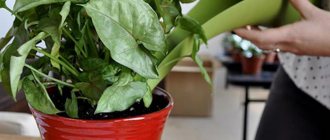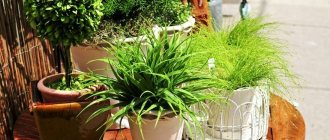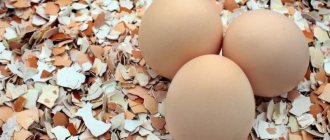To ensure human life, food is needed, and flowers need fertilizer. To enjoy the growing process and the results in the form of lush greenery, abundant flowering, and most importantly, a healthy plant with a bright color, you should know the type, dosage, and feeding rules.
Urea (urea) is a well-known fertilizer that contains the maximum amount of nitrogen compared to other minerals.
Urea is packaged in convenient polymer bags, sometimes paper or laminated containers are used. This form of release is due to the fact that the urea does not cake.
You can even store it in the fresh air; the most important thing is that it is moisture-proof; urea should not be allowed to mix with other components. Shelf life - no more than two years.
When using nitrogen make-up, you should not neglect basic protective measures to avoid burns or poisoning:
- rubber (cotton with rubberized fingers) gloves,
- respirator or gauze bandage;
- workwear.
Description
Urea is a concentrated nitrogen fertilizer, in the form of small, instant granules of white or transparent color. The substance is odorless. As the temperature increases, the solubility of the granules increases.
Kinds
Urea as a fertilizer has one composition, therefore it is not divided into varieties. The substance urea can be class A and B. Class A is used in industry. Class B in terms of nitrogen composition is suitable for feeding agricultural crops.
Compound
Urea is a chemical compound that consists of carbonic acid amide. Mass fraction of nitrogen 46.2%. Urea, whose formula is CO(NO2)2, is often the active ingredient in many complex fertilizers. According to GOST R 50568.1-93 on determining the amount of nitrogen, the substance can be used as a fertilizer in its pure form.
Properties
Urea is a highly effective substance that has the following properties:
| Properties | Characteristic |
| Solubility | Urea is highly soluble in water. The substance can also dissolve in ethanol and isopronol. |
| Melting | The granules melt at a temperature of +132.7°C. If you use a temperature above this value, the fertilizer turns into cyanuric acid. |
| Washability | Despite its good solubility, the substance has low leaching from the soil. |
| Decomposability | After being added to the soil, the granules decompose for a long time. |
| Acidifying effect | Minor. |
The fertilizer is more effective on light, slightly acidic soils.
Advantages and disadvantages
When choosing urea as a fertilizer for plants, you need to familiarize yourself with the advantages:
- universal use. Suitable for both root and foliar feeding. Does not cause burns on leaves;
- the result of fertilizing is noticeable a few days after application;
- urea quickly spreads throughout plant tissues;
- Spring treatment of plants delays flowering. Therefore, many summer residents treat trees so that spring frosts do not damage the flowers;
- Using urea you can eliminate many pests and fungal diseases.
There are many benefits to using urea. It is also important to know the disadvantages of fertilizer:
- failure to comply with the dosage may reduce seed germination;
- with frequent use, ammonia is released, which negatively affects young plants;
- The fertilizer must be stored in a dry place; the slightest contact with moisture can harm the granules.
When using other types of fertilizers on the site, urea must be applied no earlier than 14 days later.
Urea does not have good contact with this type of fertilizer such as wood ash. Therefore, to achieve the desired result, it is better not to combine such feedings.
Safety precautions
When cultivating the soil with mineral fertilizers, including urea, you need to use basic safety rules:
- Use of special clothing. Wear old robes, scarves, and caps, which can then be washed thoroughly. All skin and mucous membranes must be protected.
- Gauze bandage or respirator. The lungs and nasopharynx must be protected from chemicals to avoid poisoning.
- It is better to wash shoes after treatment. Try to wear closed shoes.
- Hands and face must be washed thoroughly after treatment.
If dry matter or working solution gets on the mucous membranes or skin, wash them and, if necessary, consult a doctor.
Harm to humans
To avoid poisoning and allergic reactions, use in the garden and garden implies mandatory compliance with safety precautions:
- treat the area using protective equipment: rubber gloves and a mask;
- after contact with skin, wash the area thoroughly with soap and rinse with running water;
- It is unacceptable to get into human food and animal feed;
- Store in a dry place, in closed packaging, away from children.
An excess of urea accumulates in leaves, berries and fruits. This may have a negative impact on your health. This can manifest itself as mild illness or an acute reaction of the body, even death. This especially applies to people with allergic reactions, weakened immune systems and young children.
When using it in your garden, it is advisable to follow the manufacturer’s recommendations indicated on the packaging. Do not allow fertilizer to come into contact with the mucous membrane or the respiratory and nutritional organs.
Features of feeding indoor flowers:
(adsbygoogle = window.adsbygoogle || []).push({});
- fertilize depending on the time of year:
- winter – once a month,
- spring - summer - weekly,
- autumn – once every 2-3 weeks;
- The growth rate of a flower crop matters:
- fast growing – weekly,
- slow - every month.
Foliar feeding by spraying a urea solution is carried out at the beginning of development to activate its growth. Prepare the solution required for treatment at the rate of 10-15 ml per flower crop and in the proportion of 1 liter of water per 7-10 grams.
When laying compost, you should pay attention to the materials of the laying. If these are materials that cause carbon reactions (sawdust, straw, leaves, grass, paper), which can heat up to 60 degrees in a heap, you need to add urea in a ratio of 1 kg/1 sq.m.
Urea as a fertilizer for indoor plants
If you carefully use urea according to the instructions, then even the most ordinary lawn with grass will delight you with bright and juicy greenery that retains its rich color for a long time.
Signs of nitrogen starvation in plants
Whether or not plants have a nitrogen deficiency can be recognized by their falling off, slower growth and loss of brightness of color. Another sign is early flowering and poor harvest. Similar symptoms may occur due to a lack of water and some other nutrients. Characteristic features of nitrogen deficiency: there will be no wilting, but if there is little water and fertilizer, then it will occur during the day. The veins of older leaves will be touched first, while the natural aging process begins at the plate. If there is a lack of iron, it will begin with young leaves.
An acute shortage of urea will provoke unnaturally rapid ripening with low yields and loss of foliage. This problem is observed on podzolic soils, red and gray soils, as well as sandstones, eroded soils and lands with high acidity or alkalinity.
Useful tips and tricks
- It is worth feeding plants with urea, protecting the respiratory tract with a special mask or gauze bandage, and your hands with gloves.
- Urea can be used not only for feeding, but also for spraying garden plants against pests. To do this, you need to dilute 500 g of urea in 10 liters of water and treat the plants with a garden sprayer.
- It is better to fertilize and spray flowers in the morning or evening, since at this time the temperature is most suitable.
Urea is one of the most popular nitrogen fertilizers, which effectively and safely helps eliminate nitrogen deficiency in flowers. In addition, the price of this supplement fully justifies its quality.
Composition and properties of urea
Urea is a carbonic acid diamide, almost half of which is nitrogen. This fertilizer is produced in the form of water-soluble crystals from transparent to white-yellowish, powder and tablets. Intended for feeding garden, vegetable and indoor plants.
Many inexperienced flower growers wonder whether it is possible to feed flowers with urea. Answer: Of course you can, especially if you want to grow lush greens.
Urea is a very popular fertilizer for plants.
Urea: proper use for fertilizing flowers
In order for flower crops to have a bright color and enjoy active growth, you should create a balanced diet for them from various fertilizers, providing appropriate care. At the same time, we should not forget that the soil must be enriched with microelements and if ornamental crops grow in one place for a long time, they deplete the soil’s useful resources. Therefore, you should not forget to plan your garden, taking into account the availability of places for replanting or planting flower crops, fertilizing the plots of land where you plan to plant the plant, and using regular fertilizing. With such an integrated approach, the garden will have a rich color and pleasant aroma.
Nutrition of ornamental plants is applied taking into account individual needs and subject to basic rules.
Annual plants:
- application of fertilizing 2 times during the season;
- the first time 10-15 days after planting, so that the seedlings take root;
- the second feeding at the time of bud formation and formation.
These simple rules will ensure full development, bright color and lush flowering.
Perennials:
- annually 3 times per season;
- first fertilizing in spring in loosened soil;
- the second - at the time of flower bud formation;
- After the plants have flowered, they should be fed to give them strength for the winter, as well as to ensure strong, healthy buds for next spring.
It is worth knowing that seemingly universal organics are not always suitable for some flower whims:
- asters,
- nasturtiums,
- marigold,
- hyacinths,
- lilies,
- daffodils,
- daylilies,
- tulips.
It should be noted that indoor bulbous ornamental plants should also not be fed with organic matter. Its use leads to various diseases and death. Urea will always come to the rescue, which will ensure the full development of plants and bright color.
Ornamental foliage plants are especially grateful to urea, because due to the high nitrogen content, green mass increases during the period of active development.
Surface feeding method (pellets):
- scattering of granular crystals over the surface of the earth;
- only around the root system of the plant without direct contact with the roots, otherwise burns may be caused;
- lightly sprinkling with soil to avoid evaporation of some of the nitrogen;
- leveling the layer with a rake;
- mandatory watering of the flower bed.
Burying the granules is necessary if the soil is too wet to prevent them from being washed away from the fertilizing site during gusts of wind or heavy rain. This method ensures a rapid response of the beneficial properties of urea.
If the soil is heavy, then you should use about 25 grams to feed 1 square meter. m. of land.
Use of tablets:
- bury the tablet in the soil in close proximity to the root;
- the tablet dissolves more slowly, resulting in an increase in the temporary interaction of the plant and beneficial properties.
Pest control using a solution:
- urea is used as a spray;
- strictly adhere to the rules for diluting urea with water;
- for pest control, a precise dose of urea per 10 liters of water is 400 grams:
- for wintering pests, spray in early spring until the buds swell;
- in summer, if there are signs of nitrogen starvation, spray immediately;
- in late autumn, in order to get rid of various pests that have accumulated over the summer, at the same time treat fallen leaves.
Natural starter cultures for watering
Hop starter
Take 1 cup of dry or fresh hop cones and place them in boiling water. Cook for one hour. When the broth has cooled, you need to strain it, and then add 4 tablespoons of flour and 2 tbsp. spoons of sugar. Leave the solution in a warm place for two days.
After 2 days, you need to add two raw, grated potatoes. After stirring, place again in a warm place for a day. Only now can the starter be used.
Wheat sourdough
Soak one glass of wheat. Leave the mixture for a day so that sprouts appear from the grains. The sprouts must be crushed into a paste. After this, combine with two tablespoons of flour and two tablespoons of sugar. Place the porridge on the fire and simmer over low heat for no more than 20 minutes. Leave the “potion” for the plants to reach - in a warm place for a day.
Common mistakes
Although urea has been used in agriculture for a long time, some mistakes are still common:
- Scattering dry granules over the soil surface. As a result, ammonia evaporates from the granules, and fertilizing turns out to be useless.
- Mixing urea with lime fertilizers, as well as wood ash. This leads to plant poisoning.
- Storing the package with the drug in an unheated place (outside or in a room such as a garage). As a result, after winter the granules stick together due to increased humidity.
- Using urea simultaneously with water for irrigation. This leads to a chemical burn of the root system of the seedlings. The urea solution is applied only to moist soil.
Sources
- https://udobryashkin.ru/promyshlennye/mochevina
- https://VseUdobreniya.com/promyshlennye/mochevina
- https://stroy-podskazka.ru/udobreniya/karbamid/
- https://FertileLand.ru/mineralnye-udobreniya/karbamid/
- https://uhodvdomashnihusloviah.ru/primenenie-udobreniya-karbamid
- https://OgorodGid.ru/udobreniya/udobrenie-mochevina-karbamid-primenenie
- https://moyasotka.com/zashhita-rastenij-i-udobreniya/mochevina-karbamid-udobrenie-primenenie-na-ogorode-i-sadu.html
- https://fermersadovod.ru/sad-i-ogorod/udobreniya/mochevina-primenenie-na-ogorode/
9 263
Strawberry
If the weather is cool during budding, you can stimulate plant growth with a 0.3% urea solution, and a day later - with a 0.5% solution of potassium monophosphate.
Nitrogen fertilizers will be useful to almost all plants. They especially need them in the spring, at the beginning of growth. Spraying is best done in cool weather or in the second half of the day.
